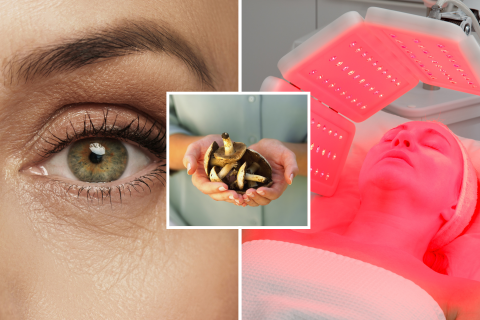Why You Should Wait to Swim After Getting a Tattoo

Introduction
Getting a tattoo is an exciting experience that leaves a permanent mark on your body. However, it’s important to remember that the process doesn’t end as soon as the tattoo is finished. In fact, aftercare plays a crucial role in ensuring the longevity and quality of your new ink. One aspect of aftercare that often gets overlooked is the importance of waiting to swim until your tattoo is fully healed.
Key Takeaway: It is crucial to avoid swimming until your tattoo is fully healed to prevent complications and ensure its long-term quality.
In this article, we will take you through the various stages of tattoo healing and explain why swimming too soon can be detrimental. We will delve into the risks and potential complications associated with swimming with a new tattoo, as well as explore how chlorine and salt water can affect the healing process. Additionally, we will provide tips on protecting your tattoos while swimming and offer guidance on recognizing and addressing issues that may arise post-swim.
Throughout this article, we will highlight the significance of allowing your tattoo to heal properly before taking a dip in the pool or ocean. By following these guidelines, you can ensure that your tattoo remains vibrant, clear, and free from complications.
The Healing Process for Tattoos
After you get a tattoo, it’s crucial to focus on healing to preserve the quality and longevity of the artwork. Understanding the stages of tattoo healing and giving each step enough time is essential for getting the best results. Here’s what you need to know about how tattoos heal:
1. Initial Stage (Days 1-5):
- Right after getting a tattoo, your skin may be red, swollen, and sensitive.
- Apply a thin layer of ointment to keep the area moisturized and protected.
- Keep the tattoo clean and dry to prevent infection.
2. Peeling and Itching (Days 6-14):
- The tattooed skin will start to peel and itch as it heals.
- Avoid scratching or picking at the peeling skin to protect your tattoo.
- Use a recommended moisturizer to relieve itching and help with healing.
3. Final Healing (Days 15-30+):
- Your tattoo will be in the last stages of healing, with less peeling happening.
- As your skin goes back to normal, you’ll see the full colors and details of your tattoo.
- Be careful not to expose your healed tattoo to direct sunlight or harsh chemicals.
Throughout the entire healing process, there are certain things you should avoid doing to prevent problems:
- Don’t go swimming in pools, oceans, or hot tubs because water can slow down healing and increase infection risks. Here are some tips on preserving your fresh tattoo that might help.
- Stay away from too much sun exposure since UV rays can fade healing tattoos and irritate your skin. Applying sunscreen specifically designed for tattoos can provide extra protection.
- Avoid activities that might rub against your new tattoo, as this can cause scabs or make the colors fade.
Understanding these stages and giving your tattoo enough time to heal will make a big difference in how it looks in the long run. Just be patient while it goes through the healing process, and you’ll end up with a beautifully healed tattoo that you can enjoy for years to come. For more information on aftercare, you can also refer to resources provided by the Mayo Clinic.
Risks and Potential Complications of Swimming with a New Tattoo
Swimming with a new tattoo can be risky. Here’s why:
1. Increased Risk of Infection
- Fresh tattoos have open wounds that are susceptible to bacteria.
- Swimming pools and natural bodies of water may contain bacteria.
- When you swim with a new tattoo, you expose it to these bacteria.
- This can lead to infections like cellulitis or other skin infections.
2. Potential for Scarring
- Tattoos need time to heal properly.
- During the healing process, a protective layer forms over the tattooed skin.
- This layer helps shield the tattoo from external factors.
- If you submerge a new tattoo in water too soon, it can disrupt this process.
- The result? Possible scarring that affects the appearance of your tattoo.
3. Damage from Chlorine and Salt Water
- Chlorine is commonly used in swimming pools to keep them clean.
- However, chlorine can have negative effects on tattoos.
- It can cause fading, discoloration, dryness, itching, flaking, scabbing, and patchiness.
- Salt water from oceans or seas can also impact the healing process and look of tattoos.
- It may lead to color loss or distortion in your new tattoo design.
It’s important for people with fresh tattoos to be aware of these risks before swimming. By understanding the potential problems, you can make better choices to protect your tattoos and promote proper healing.
Understanding the Effects of Chlorine and Salt Water on Healing Tattoos
When it comes to preserving the quality of a new tattoo, understanding the impact of swimming in chlorine and salt water is crucial. Let’s delve into how these elements affect the healing process and overall appearance of tattoos:
1. Chlorine’s Disinfectant Properties
Chlorine, commonly used in swimming pools to kill bacteria, can inadvertently disrupt the natural recovery process of a fresh tattoo. Its disinfectant properties may affect the skin’s ability to heal properly, leading to potential complications such as delayed healing and increased risk of infection.
2. Drying and Irritating Effects
Exposure to chlorine while swimming can cause excessive dryness and irritation on freshly tattooed skin. This can result in discomfort, itching, and flaking, which hinders the healing progress. It’s essential to keep the area moisturized before and after swimming to mitigate these effects.
3. Osmotic Effect of Salt Water
Salt water, found in oceans and seas, exerts an osmotic effect on healing tattoos. This means that it can draw out moisture from the skin, potentially disrupting the natural balance required for optimal healing. Moreover, salt water has the capacity to extract ink from the skin during the initial healing stages, affecting the clarity and vibrancy of the tattoo design.
4. Common Misconceptions about Sea Salt Soaks
There is a common misconception that using sea salt soaks for tattoo aftercare can be beneficial. However, this practice can actually exacerbate negative effects when it comes to healing tattoos. While saline solutions are recommended for cleaning piercings, they are not suitable for tattoo aftercare due to their potential to dry out the skin and draw out ink.
Understanding these effects is pivotal in safeguarding the integrity of your new tattoo. By being aware of how chlorine and salt water can impact healing tattoos, you are better equipped to take appropriate measures for protection.
Minimizing Risks: Tips for Protecting Your Tattoos While Swimming
After discussing the potential risks of swimming with a new tattoo, it’s essential to explore effective ways to protect your tattoo during swimming sessions. Here are some tips to minimize the risks associated with exposing your healing tattoo to water:
1. Avoid Sole Reliance on Occlusive Ointments
While occlusive ointments can provide a temporary barrier for your tattoo, they may not offer sufficient protection during swimming activities. These ointments are designed to lock in moisture and prevent air exposure, but they may not withstand the prolonged submersion and water pressure experienced while swimming. Therefore, it’s important to consider additional protective measures.
2. Consider Alternative Methods
Instead of solely relying on occlusive ointments, consider using waterproof adhesive film or specialized tattoo sealants specifically designed for use during water activities. These products are formulated to create a durable barrier that shields your tattoo from water, reducing the risk of damage or infection.
By implementing these protective measures, you can safeguard your healing tattoo while enjoying swimming activities. It’s crucial to prioritize the long-term quality and appearance of your new tattoo by taking proactive steps to protect it during the delicate healing stages.
Remember, understanding the potential consequences of swimming with a new tattoo and taking necessary precautions can help you maintain the integrity of your tattoo while indulging in activities you enjoy.
Recognizing and Addressing Issues After Swimming with a Fresh Tattoo
After swimming with a new tattoo, it is crucial to be vigilant for any signs of infection or degradation to protect the healing process and the quality of the tattoo. Here are some important points to consider:
1. Signs of Infection
Educate yourself about the common signs of infection that may manifest after exposing a healing tattoo to swimming pools or natural bodies of water. These signs include:
- Increased redness and warmth around the tattooed area
- Intensified tenderness or pain
- Pus or other unusual discharge
- Development of a fever
- Swelling beyond the normal healing process
It is essential to seek prompt medical attention if any of these post-swimming complications arise. By addressing potential infections early, you can prevent further damage to the tattooed skin and ensure proper healing.
2. Tattoo Degradation
Keep an eye out for any signs of tattoo degradation that may result from swimming with a fresh tattoo. These signs can include:
- Excessive peeling or flaking beyond the typical healing phase
- Unusual discoloration or patchiness in the tattoo design
- Delayed scabbing or prolonged itchiness
If you notice any of these issues after swimming, it is advisable to consult with your tattoo artist or a healthcare professional promptly. They can provide guidance on whether the tattoo has been compromised and recommend appropriate measures to support its recovery.
Remember, being proactive in recognizing and addressing these post-swimming concerns is crucial for preserving the integrity of your new tattoo and safeguarding your skin’s health.
Conclusion
After getting a tattoo, it is crucial to wait until your tattoo is fully healed before going for a swim. The waiting period before swimming after getting a tattoo is typically around 2-4 weeks. This allows the tattoo to go through the necessary healing stages and ensures its long-term quality.
The importance of tattoo care cannot be overstated. Swimming with a new tattoo increases the risk of infection, scarring, and color loss. Exposing a healing tattoo to swimming pools or natural bodies of water can introduce bacteria, leading to potential complications. Additionally, submerging a fresh tattoo in water can disrupt the healing process and cause permanent scarring.
Chlorine and salt water can also have detrimental effects on healing tattoos:
- Chlorine’s disinfectant properties can disrupt the natural recovery process and dry out freshly tattooed skin.
- Salt water has an osmotic effect that extracts moisture and ink from the healing skin.
Both chlorine and salt water can lead to fading, discoloration, dryness, itching, flaking, scabbing, and patchiness in the tattoo.
To protect your tattoos while swimming, it is important to take necessary precautions:
- While occlusive ointments can provide some temporary barrier against water, they are not foolproof.
- Instead, consider using waterproof adhesive film or specialized tattoo sealants for more effective protection during swimming sessions.
In conclusion, by understanding the potential consequences and taking necessary precautions, you can enjoy both your new tattoo and your love for swimming without compromising either. Waiting until your tattoo is fully healed before swimming is essential to prevent complications such as infection, scarring, and color loss. Take care of your tattoos and give them the time they need to heal properly – it will be worth it in the long run.
Remember: if you experience any signs of trouble after swimming with a fresh tattoo such as redness, tenderness, or peeling, it is important to seek prompt medical attention. This will help prevent further damage to the tattooed skin and ensure a successful healing process.










